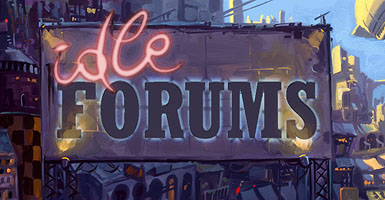-
Content count
2 -
Joined
-
Last visited
About Mitch
-
Rank
Member
- Birthday 01/27/1993
Profile Information
-
Gender
Male
-
Location
Santa Cruz, CA
-
For the past five months I have been working on a secret project. It is a game so secret that almost nobody is going to ever play it. Sèance is an interactive experience in which three players follow the trail of clues left by their recently deceased friend, Clarence Fletcher. But untangling the web of information isn’t quite so simple - each player has a secret to keep and everything to lose. Sèance is a cross between a real room escape game, a murder mystery dinner theater, and the iOS/Android game The Room. It is our attempt to create a unique narrative experience by encouraging simple role playing and puzzle solving in a fully realized environment. We are aiming for the experience accessible to players who have done little or no RP in the past. This game is effectively an installation piece, vastly limiting the number of players we expect to have the opportunity to experience it first-hand. We hope to tour it at game conventions in the coming year, but that possibility relies on how well the game is received at its first showing. The first (and maybe only!) time that this game will be playable by the public is on Saturday, June 4th in Santa Clara at the UCSC Silicon Valley Extension, from 10:30am to 7pm, just one month away! If you think you’ll be able to come to this event and don’t want the experience spoiled, please don’t read further! ---------------------------------------------------------------------------- What does “playing” Sèance actually look like? The experience starts with the three players being introduced to their characters via a short letter written by their late friend Clarence. Each one is given a prop (e.g. The Doctor is given a stethoscope) that helps to ground them to their character but is also used to solve puzzles later in the experience. The three are then welcomed into a small tent by a Roma/Gypsy medium (an actor) who invites them to sit around a table. She serves as the tutorial, walking them through the steps of “initiating the sèance,” putting the players in contact with the basic modes of interaction that are used in subsequent puzzles. The three are then left to their own devices to follow the clues through puzzles and Clarence’s journal entries. In many instances players will have the opportunity to keep information they’ve found hidden if they believe that it incriminates them in Clarence’s death. The final “act” focuses less on solving puzzles and more on the emergent understanding of what happened to Clarence and what role they each played. The entire experience is designed to take 30 minutes. Okay, so how is this a game? Sèance can only be considered a game under a loose definition - it is a relatively linear experience that uses puzzles as a mechanism for progression and aims for 100% success rate since it’s only meant to be played once with minimal intervention. Solving the puzzles almost always involves interacting either with narrative elements or haunted elements. Sorry, did you say haunted? Yes indeed! Items that the player interacts with are embedded with a variety of sensors, motors, and microcontrollers that all feed into a computer that’s monitoring their states. This allows for us to create a “supernatural” experience by having object act in unexpected ways. One of the main goals of Sèance is to create novel human/computer interaction by obscuring the presence of electronic and computational elements. Using the narrative framing of a ghost is a fun way to set and upset the player’s expectations - flickering lights will be predictable but exciting, glowing apparitions will be totally surprising. What’s the current status of Sèance? We are in full production mode, and most of the physical components are in their final stages of completion. The engine is currently a very simple sequential state checker, but we have the stretch goal of a more sophisticated hint system that uses past playtest data to make predictions and attempt to fit an ideal intensity curve. In the coming weeks I will be posting updates in this thread with in-depth focuses on each object's design and function. I realize this is a bizarre game that I may not have adequately explained. Please feel free to ask me any clarifying questions here, on the idlethumbsreaders Slack @mitch, or on Twitter @mitchmastroni.
-

Mein Thumbcraft—IdleT Dedicated Minecraft Server
Mitch replied to MrHoatzin's topic in Multiplayer Networking
Hello! Could I be whitelisted on the server? My name is TheOrangeDoor . Thanks in advance!
